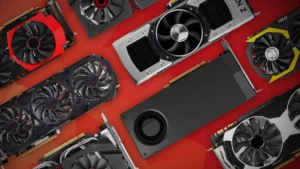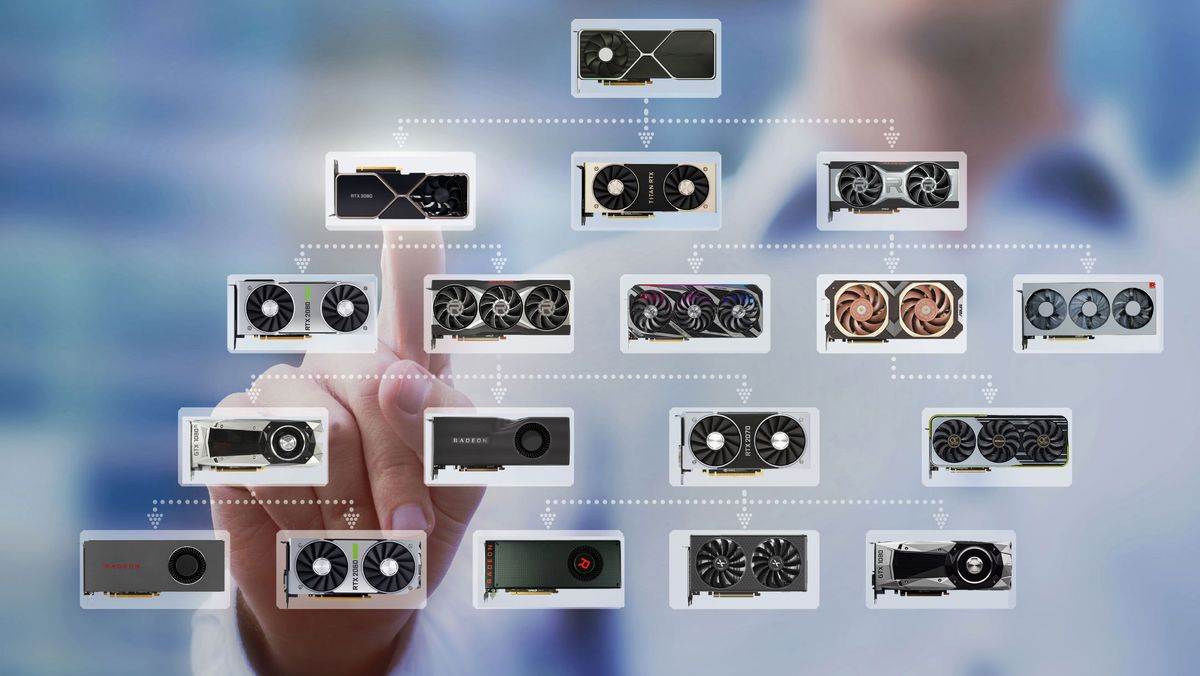The GPU hierarchy refers to the classification of graphics processing units (GPUs) based on their performance, architecture, and intended use. Graphics cards are vital components in modern computing, powering everything from video games and graphic design to machine learning and data science. Understanding the GPU hierarchy helps consumers, gamers, content creators, and professionals select the right GPU for their needs, as well as gives insight into the broader technology landscape.
What is a GPU?
A Graphics Processing Unit (GPU hierarchy) is a specialized processor primarily designed to accelerate the creation of images and videos. It handles rendering, image processing, and video encoding and decoding. Unlike a CPU (Central Processing Unit), which is optimized for serial tasks, a GPU can perform many calculations in parallel, making it ideal for the massive parallelism required in graphics and computational workloads.
The Levels of GPU Hierarchy
GPUs can be broadly categorized into different tiers based on their performance. These categories are typically split into entry-level, mid-range, high-end, and professional GPUs. Understanding the hierarchy helps in choosing the right GPU based on specific needs, such as gaming, content creation, or machine learning.
1. Entry-Level GPUs
Entry-level GPU hierarchy are designed for users who require basic graphical performance. These GPUs are typically found in budget desktops and laptops. They are sufficient for tasks like web browsing, office productivity applications, and casual gaming.
- Target Audience: Casual gamers, everyday users, and budget-conscious buyers.
- Examples:
- NVIDIA GeForce GTX 1650
- AMD Radeon RX 6400
These GPUs often feature lower memory capacities and fewer cores, which limits their ability to handle more demanding tasks like AAA gaming or 3D rendering.
2. Mid-Range GPUs
Mid-range GPU hierarchy are more powerful and versatile than entry-level options. They are ideal for users who engage in moderate gaming, content creation, or even some professional tasks such as video editing or 3D modeling. These GPUs strike a balance between performance and cost, making them a popular choice for a wide variety of users.
- Target Audience: Gamers, hobbyist content creators, and individuals seeking improved performance at a reasonable price.
- Examples:
- NVIDIA GeForce RTX 3060
- AMD Radeon RX 6700 XT
Mid-range GPUs feature better performance in 1440p gaming and content creation workflows, making them a solid choice for users who need more than entry-level power without breaking the bank.
3. High-End GPUs
High-end GPUs are built for enthusiasts and professionals who demand maximum performance. These GPUs can handle 4K gaming, real-time ray tracing, and intense computational workloads like machine learning. They also excel in rendering applications for filmmakers, architects, and other professionals in creative industries.
- Target Audience: Hardcore gamers, professional content creators, and power users.
- Examples:
- NVIDIA GeForce RTX 4090
- AMD Radeon RX 7900 XTX
High-end GPU hierarchy are equipped with substantial memory (often 12GB or more) and a large number of CUDA cores (in NVIDIA’s case) or stream processors (in AMD’s case), allowing for extreme parallel processing. These cards also support the latest technologies like real-time ray tracing, DLSS (Deep Learning Super Sampling), and variable rate shading.
4. Professional GPUs
Professional GPUs are optimized for workstation environments and tasks like CAD (Computer-Aided Design), scientific simulations, video editing, and AI development. Unlike gaming GPUs, these cards often prioritize accuracy, stability, and specific optimizations for professional software.
- Target Audience: Engineers, scientists, 3D animators, and professionals in technical industries.
- Examples:
- NVIDIA Quadro RTX 8000
- AMD Radeon Pro WX 8200
These GPUs come with features like ECC (Error-Correcting Code) memory to prevent data corruption, and certified drivers for optimized performance in professional applications. While their gaming performance is typically not as high as consumer-focused cards, they are unrivaled in reliability and precision for industry-specific tasks.
Factors Influencing the GPU Hierarchy
 Several factors contribute to the placement of a GPU within the hierarchy:
Several factors contribute to the placement of a GPU within the hierarchy:
1. Performance (Core Count, Clock Speeds, Memory Bandwidth)
Performance is determined by various specifications, including the number of cores (CUDA cores for NVIDIA or stream processors for AMD), clock speeds, and memory bandwidth. The more cores and higher clock speeds a GPU has, the better it can handle demanding tasks like gaming at higher resolutions or running computational algorithms.
2. Memory (VRAM)
The amount of dedicated video memory (VRAM) is crucial for performance, particularly in high-resolution tasks like 4K gaming or professional video editing. High-end GPUs tend to have more VRAM, which helps them manage larger textures and more complex scenes.
3. Architecture
The underlying architecture of the GPU hierarchy determines its efficiency and capabilities. For example, NVIDIA’s Ampere and Ada Lovelace architectures and AMD’s RDNA and CDNA architectures bring new technologies and performance improvements to the table, such as better ray tracing capabilities, energy efficiency, and AI-powered features like DLSS.
4. Software and Driver Support
High-end GPUs often benefit from better driver support and software optimization. Professional GPUs, for instance, are often tailored to work seamlessly with industry-standard software like AutoCAD, Adobe Premiere, or Blender, ensuring stability and performance.
Future of the GPU Hierarchy
As we look to the future, the GPU hierarchy will continue to evolve as new technologies emerge. Here are some factors that will influence the future of GPUs and their classification:
1. Specialized GPUs for Specific Workloads
In the future, we may see GPUs further specialized for specific applications. For instance, gaming GPUs may continue to evolve separately from professional GPUs, with the former focusing on high FPS (frames per second) and 4K performance, while the latter may focus more on stability and software certifications for enterprise use. Additionally, AI-centric GPUs will likely become more prevalent as machine learning and AI applications continue to rise.
2. Integration with Quantum Computing
Although quantum computing is still in its early stages, GPUs may play a key role in accelerating quantum algorithms. The synergy between classical computing (driven by GPUs) and quantum computing could lead to hybrid systems capable of solving problems that are currently intractable with traditional computers alone.
3. Multi-GPU Setups and GPU Clusters
As the demand for high-performance computing grows, particularly in scientific research, artificial intelligence, and content creation, multi-GPU setups and GPU clusters could become more commonplace. These setups allow users to combine the power of several GPUs to handle demanding tasks more efficiently, whether it’s in personal workstations or data centers. Future GPU hierarchy will likely be designed with multi-GPU configurations in mind, providing enhanced scalability and performance.
Conclusion
Understanding the GPU hierarchy is essential for making informed decisions when purchasing a GPU. Whether you’re a casual gamer, a content creator, or a professional working in scientific fields, knowing where different GPUs fall in the hierarchy helps you make the best choice based on your specific needs.
As GPU hierarchy technology advances, the hierarchy will continue to evolve, offering more specialized solutions for various applications. By staying informed about the latest developments in GPU architecture and performance, users can ensure that they select the most efficient and cost-effective options for their tasks, ensuring they get the best value for their investment in graphics processing power.
You May Also Read: How to Delete Telegram Account











Leave a Reply